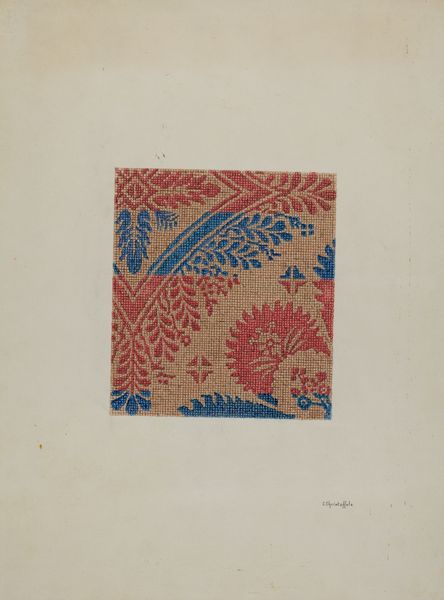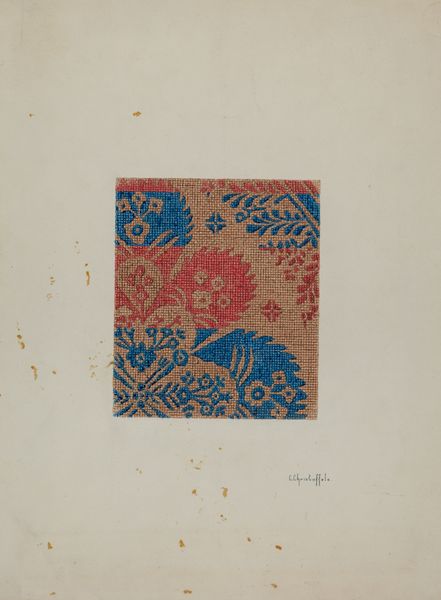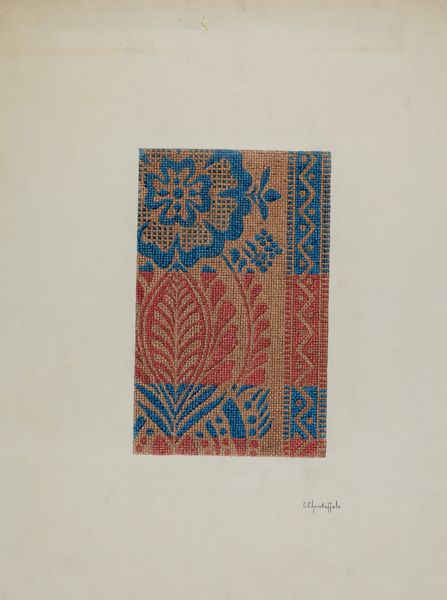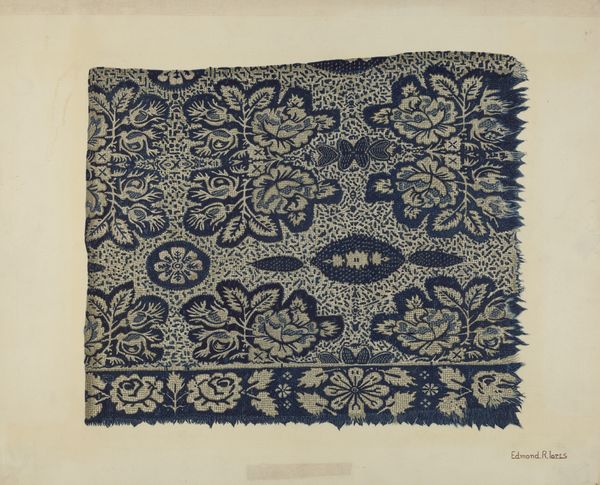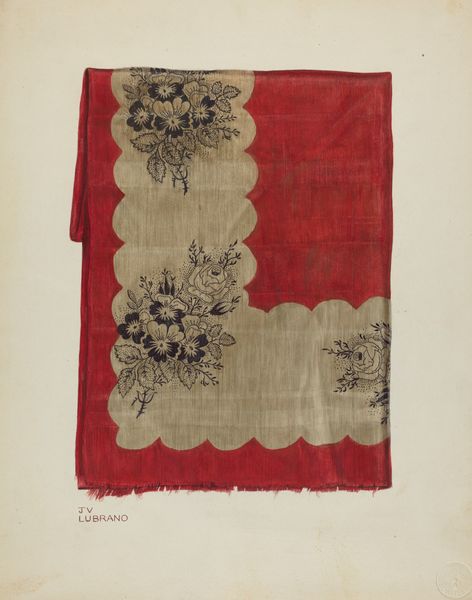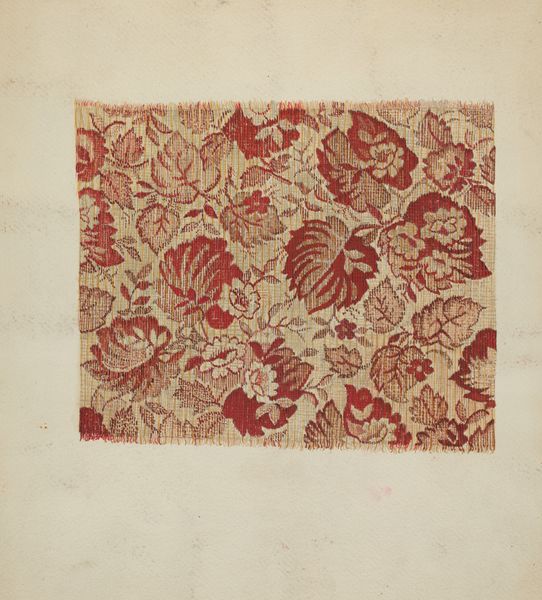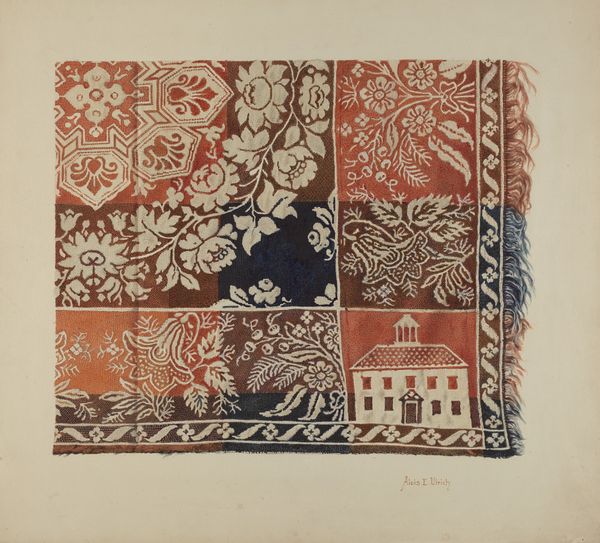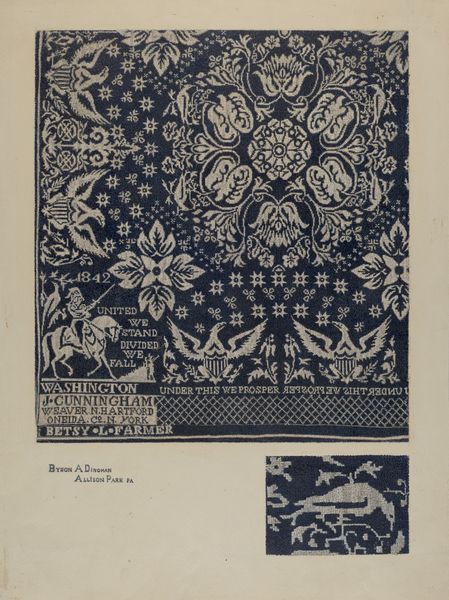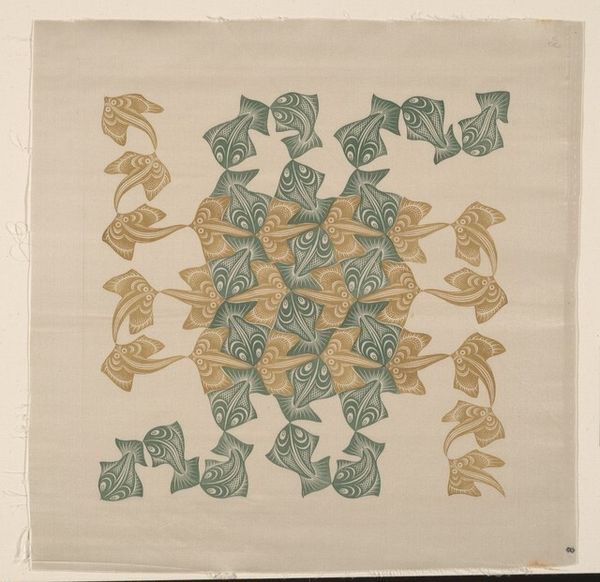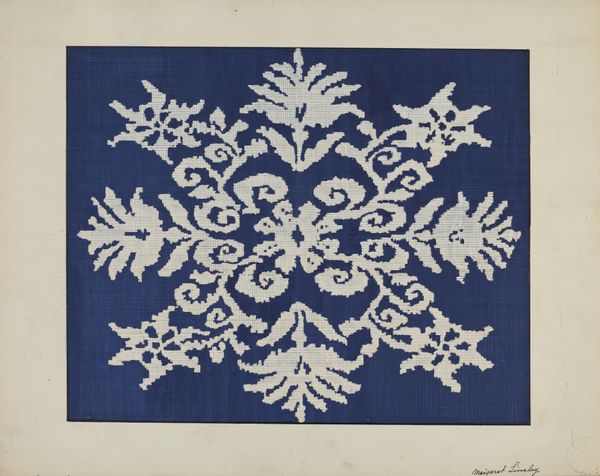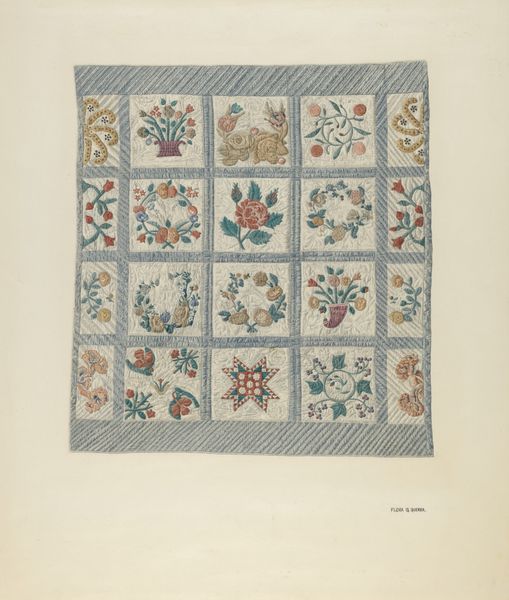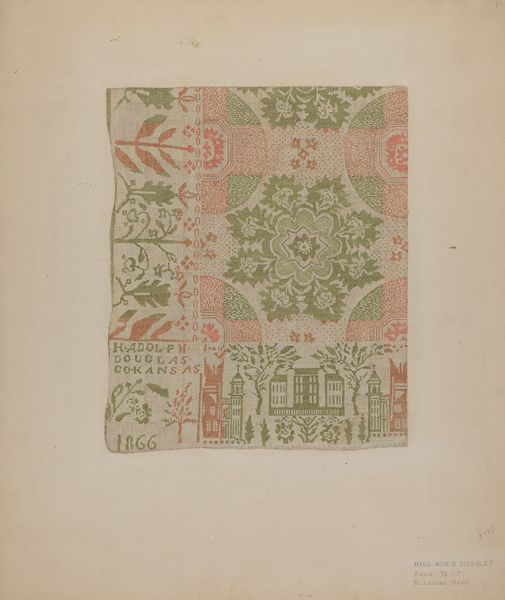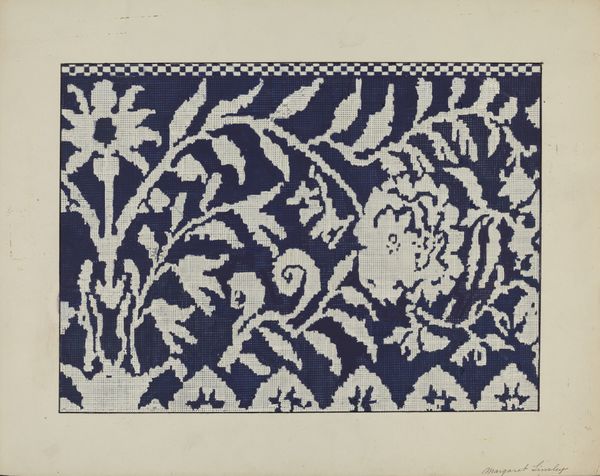
drawing
#
photo of handprinted image
#
drawing
#
natural stone pattern
#
decorative element
#
feminine design
#
repetition of white
#
white palette
#
tile art
#
white focal point
#
repetition of white colour
#
imprinted textile
Dimensions: overall: 26.6 x 35.5 cm (10 1/2 x 14 in.) Original IAD Object: 90" long; 76" wide
Copyright: National Gallery of Art: CC0 1.0
Curator: I find this Coverlet, circa 1940 by Cornelius Christoffels, so incredibly soothing. It reminds me of Delftware, both in its color palette and folk sensibility. Editor: I agree; there’s an immediate tranquility in its design. It almost appears pixelated in the distribution of color—certainly interesting as an "imprinted textile." There’s something about the grid structure in this textile design which looks rather modern for its time. Curator: Look closely; this isn't merely decorative, but rather the transmission of deeply rooted cultural symbols and communal narratives passed down through generations of textile art. Editor: Tell me more. Is there a significance to these specific star motifs and floral arrangements at the base and throughout, especially given that we see similar designs echoed across numerous cultural landscapes in the early twentieth century? Curator: Yes, these images aren't purely aesthetic; it's not *just* tile art, although that resonates as well. The star for one is an almost universal symbol of guidance, while the foliage reflects ideas of growth, prosperity, perhaps even a connection to an ancestral homeland. It makes me think of collective identities constructed from individual acts of creation—each stitch or choice a voice in the making of a common heritage. Editor: I appreciate that perspective. For me, knowing that Christoffels likely created this piece during the mid-century is so vital. Think about the economic instability, migration and war-- how the production and sharing of textiles became an act of defiance against homogenization. How interesting, right, that textiles could resist assimilation, reclaiming the narrative power back to domestic spaces... Curator: Exactly, it underscores that these "feminine designs" carry an enduring historical presence. We must always resist dismissing their subtle power in defining historical consciousness and shaping political identities. It serves to honor those unnamed artisans before and after, whose shared histories reverberate through these visual markers of memory. Editor: Absolutely. The object here almost appears like an "artifact" from the early twentieth-century visualizes a profound, often unspoken, conversation about the making and meaning of culture. This really urges the modern beholder to participate in active remembering of history.
Comments
No comments
Be the first to comment and join the conversation on the ultimate creative platform.
